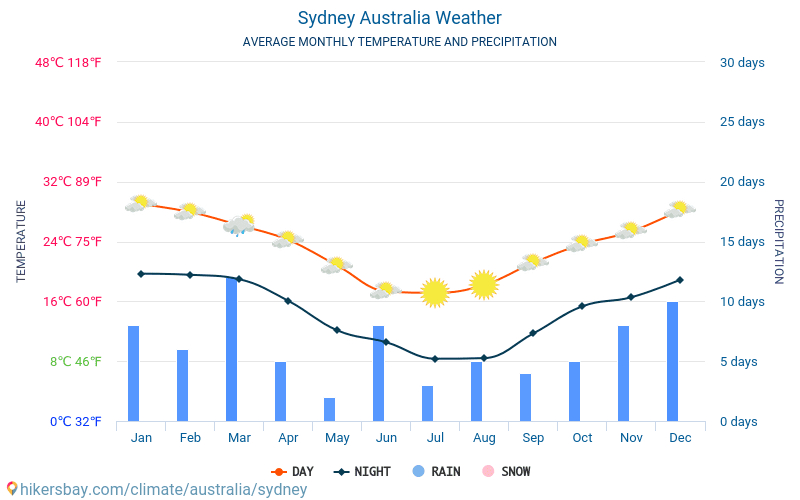
What time is it in Sydney Australia?
The three primary time zones used in Australia are Australian Western Standard Time (AUTC+08:00), Australian Central Standard Time (ACST; UTC+09:30), and Australian Eastern Standard Time (AEST; UTC+10:00). Individual state governments regulate the time, with some observing daylight saving time (DST). The time zones in Australia's overseas territories are different.
Standard time was introduced in the 1890s, and it was adopted by all of Australia's colonies. Before the implementation of standard time zones, each local city or town was free to set its own local time, which was referred to as local meantime.
The time zone on Norfolk Island is (UTC+11:00) during the winter and NFDT (UTC+12:00; 1 hour ahead of AEDT) during the summer.
Daylight saving time (DST)
It is up to the governments of individual states and territories to decide whether or not to implement DST. During World Wars I and II, however, every state and territory used daylight saving time (DST). New South Wales, Victoria, Queensland, South Australia, and the Australian Capital Territory followed in 1971 as the first states to employ DST in peacetime.
It was not adopted by Western Australia or the Northern Territory. In 1972, Queensland dropped DST.
Queensland and Western Australia have experimented with DST on a few occasions over the last 40 years.
The following are the primary DST zones:
• UTC+10:30 in South Australia and Broken Hill, New South Wales (Australian) Central Daylight Saving Time (ACDT or CDST).
• In New South Wales, the ACT, Victoria, and Tasmania, Eastern Daylight Saving Time (AEDT or EDST) - UTC+11:00
The three normal time zones in Australia become five zones during DST seasons. Western Australia (UTC plus 08:00), the Northern Territory (UTC plus 09:30), and Queensland are among the areas that do not observe DST (UTC plus 10:00).
Special events
All eastern jurisdictions that normally observe DST—New South Wales, Victoria, the ACT, and Tasmania—began DST early in 2000 as a result of the Summer Olympic Games in Sydney. These areas began using Daylight Savings Time on August 27, 2000. South Australians didn't change their clocks till the traditional day of October 29, 2000.
Due to the 2006 Commonwealth Games in Melbourne in March, all states that observed DST (the states listed above plus South Australia) delayed their return to Standard Time by one week. DST was terminated on April 2, 2006.
National times
There are times when a countrywide time is implemented. A national time can be employed in the case of economic activity. A prospectus for the issuance of stock in a corporation, for example, would often set the closing time for offers at some location (e.g. Sydney) as the time when offers are received, regardless of source.
Similarly, tenders for the sale of stock frequently specify the time by which they must be submitted at a specific location to be considered. The Australian Stock Exchange, for example, operates on Eastern Standard Time.
#Time in Sydney Australia #Current time in Sydney
#Time zone in Sydney #Time in Sydney
#Current local time in Sydney Australia
- Comments (0)
- Recommended
- Milestones
Here are your recommended items...
Here are your milestones...



